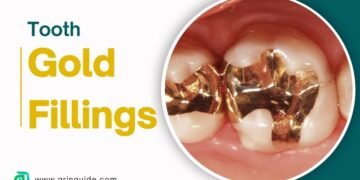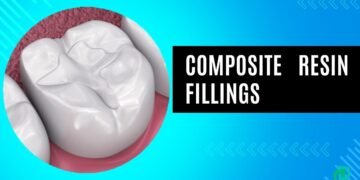Table of Contents
Introduction to Amalgam Tooth Fillings
Amalgam tooth fillings, often referred to as silver fillings, are a long-standing method for dental restorations. These fillings are composed of a mixture of metals, primarily including mercury, silver, tin, and copper. The amalgamation of these metals creates a durable and effective material that has been widely used in dentistry for over a century.
The history of amalgam in dental practices dates back to the early 19th century. Its inception marked a significant advancement in dental care, offering a reliable solution for cavity fillings. The combination of metals in amalgam fillings provides a strong and lasting restoration, capable of withstanding the forces of chewing and grinding. This durability is one of the primary reasons for its enduring popularity in dental treatments.
In addition to its robustness, amalgam is also cost-effective. The affordability of amalgam fillings makes them accessible to a broad range of patients, contributing to their widespread use. This has been particularly beneficial in public health settings, where budget constraints often limit the availability of more expensive restorative materials.
Despite the introduction of alternative materials, such as composite resins and ceramics, amalgam fillings remain a common choice for many dental professionals. Their proven track record in terms of longevity and performance continues to make them a viable option for treating dental caries. However, it is important to note that the use of mercury in amalgam has raised some health and environmental concerns, prompting ongoing research and discussions within the dental community.
Overall, amalgam tooth fillings have played a crucial role in the evolution of dental care, providing a reliable and economical solution for patients worldwide. Their unique composition and historical significance underscore their importance in the field of dentistry, ensuring their continued relevance in modern dental practices.
Amalgam Filling vs. Composite Filling
When it comes to dental restorations, two common types of Dental fillings are amalgam and composite. Each has unique properties that cater to different dental needs and patient preferences.

Material Composition: Amalgam fillings, often referred to as silver fillings, are composed of a mixture of metals, including silver, tin, copper, and mercury. This combination provides a durable and long-lasting solution for dental cavities. In contrast, composite fillings are made from a resin-based material that can be color-matched to the patient’s natural tooth shade, offering a more aesthetically pleasing result.
Aesthetics: One of the most significant differences between amalgam and composite fillings lies in their appearance. Amalgam fillings are metallic and noticeable, making them less favorable for visible areas of the mouth. Composite fillings, however, blend seamlessly with natural teeth, making them a preferred choice for fillings in the front teeth or other areas where aesthetics are crucial.
Durability: In terms of durability, amalgam fillings have a long-standing reputation for their strength and longevity. They can withstand significant chewing forces and are less likely to wear down over time. Composite fillings, while strong, are generally less durable than amalgam and may need to be replaced more frequently, especially in areas subjected to heavy biting pressure.
Cost: Cost is another consideration when choosing between amalgam and composite fillings. Generally, amalgam fillings are less expensive due to the lower cost of materials and the simpler application process. Composite fillings tend to be more costly, reflecting the advanced materials and additional time required to place them.
Application Process: The application process for each type of filling also differs. Amalgam fillings are relatively straightforward to place, often requiring less time in the dental chair. Composite fillings, however, require a more meticulous process, involving the layering and curing of the resin material to ensure a proper bond with the tooth structure.
In summary, the choice between amalgam and composite fillings depends on various factors, including aesthetics, durability, cost, and the specific dental requirements of the patient. Consulting with a dental professional can help determine the most suitable option based on individual needs and preferences.
Amalgam Filling Removal: Pros and Cons
Amalgam fillings, while durable and cost-effective, have been a topic of debate due to their mercury content and aesthetic appearance. Many individuals consider having their amalgam fillings removed for various reasons, ranging from health concerns to cosmetic preferences.
One of the primary motivations for removing amalgam fillings is the potential health risks associated with mercury exposure. Although the amount of mercury in dental amalgam is considered safe by many health organizations, some individuals prefer to eliminate any potential risk, especially if they experience sensitivity or allergic reactions. Additionally, there’s a growing preference for composite fillings, which are mercury-free and can be color-matched to natural teeth, offering a more visually pleasing result.

However, the removal of amalgam fillings is not without its risks. The process can release mercury vapors, which can be harmful if inhaled. Therefore, it is crucial to choose a dental professional experienced in safe amalgam removal techniques, such as using high-volume suction and rubber dams to minimize exposure. Moreover, the removal and replacement procedure can be time-consuming and may require multiple visits, depending on the number of fillings being replaced.
On the positive side, replacing amalgam fillings with modern composite materials can improve the overall appearance of one’s smile and potentially reduce any health concerns related to mercury. Composite fillings also bond directly to the tooth structure, which can provide additional support and reduce the risk of future decay.
Patients considering this procedure should consult with their dentist to weigh the pros and cons based on their specific circumstances. Understanding the potential risks and benefits, as well as discussing the procedural details, will help in making an informed decision regarding the removal of amalgam fillings.
Amalgam Components
An amalgam filling is a common dental restoration material known for its strength and durability. It is composed of a mixture of metals, primarily mercury, silver, tin, and copper. Each of these components plays a critical role in the overall functionality and longevity of the filling.
- Mercury, which constitutes approximately 50% of the amalgam, acts as a binding agent. Its unique property of being a liquid at room temperature allows it to amalgamate easily with the powdered alloy of silver, tin, and copper. This amalgamation creates a pliable mixture that can be easily manipulated to fill the cavity before it hardens into a durable substance.
- Silver is a significant component, making up about 22-32% of the amalgam. It enhances the filling’s strength and durability, ensuring it can withstand the pressures of chewing and grinding. Silver also contributes to the amalgam’s longevity, making it a reliable choice for long-term dental repairs.
- Tin, which comprises around 14% of the amalgam, plays a crucial role in improving the workability of the mixture. It makes the amalgam more malleable, allowing it to be easily shaped and fitted into the cavity. Tin also aids in the setting process, ensuring the filling hardens appropriately.
- Copper, usually present in quantities of 8-10%, boosts the amalgam’s strength and resistance to corrosion. It enhances the overall structural integrity of the filling, making it less likely to fracture or wear down over time.
While amalgam fillings are highly effective, there have been health concerns, primarily related to mercury. Mercury can be toxic in large amounts; however, numerous studies and health organizations, including the American Dental Association and the World Health Organization, assert that the mercury in dental amalgam is safe for most individuals. The mercury is tightly bound within the amalgam, significantly minimizing any risk of exposure.
In summary, the amalgam mixture’s components—mercury, silver, tin, and copper—each contribute uniquely to the filling’s strength, durability, and ease of application. Despite some health concerns, amalgam remains a trusted and widely used material in dental restorations.
The Amalgam Filling Procedure
The amalgam tooth filling procedure is a well-established method for treating cavities, known for its durability and strength. The process begins with the thorough preparation of the affected tooth. Initially, the dentist administers a local anesthetic to numb the area around the tooth, ensuring patient comfort throughout the procedure. Once the area is sufficiently anesthetized, the dentist uses a dental drill to remove the decayed portion of the tooth, creating a clean and stable cavity for the filling.
Next, the amalgam material is prepared. Amalgam is a mixture of metals, including silver, tin, copper, and mercury. These components are combined to create a pliable material that can be easily shaped to fit the cavity. The dentist mixes the amalgam on-site just before application, ensuring its optimal consistency and reactivity. This freshly mixed amalgam is then carefully placed into the prepared cavity. Using specialized dental instruments, the dentist packs the amalgam firmly into the tooth, ensuring that it fills all voids and contours appropriately.
Once the amalgam is in place, the dentist begins the process of shaping and contouring the filling. This step is crucial for restoring the tooth’s natural function and appearance. The dentist meticulously sculpts the amalgam to replicate the tooth’s natural anatomy, paying close attention to the occlusal surfaces where the upper and lower teeth meet. After achieving the desired shape, the amalgam is polished to a smooth finish, which helps to prevent plaque accumulation and ensures a comfortable bite.
Patients can expect the entire procedure to take about 20 to 30 minutes per tooth, depending on the extent of decay and the size of the cavity. Discomfort during the procedure is minimal due to the effective use of anesthetics. Post-procedure, patients may experience slight sensitivity in the filled tooth, which typically subsides within a few days. Normal activities can generally be resumed immediately, though it is advisable to avoid chewing on the filled tooth for a few hours to allow the amalgam to set properly.
The decline in the use of amalgam fillings by dentists can be attributed to several key factors. One of the primary reasons is the shift towards more aesthetically pleasing options, such as composite fillings. Unlike amalgam, which is a silver-colored material, composite fillings can be closely matched to the natural color of teeth, making them a preferable choice for patients concerned with appearance. This cosmetic advantage has significantly influenced both patient preferences and dental practices.
Another critical factor is the growing concern about the potential health risks associated with mercury exposure. Amalgam is composed of a mixture of metals, including mercury, which has raised alarm among both patients and health professionals. Although the American Dental Association (ADA) and other health organizations maintain that amalgam fillings are safe, the public perception of mercury as a harmful substance has led to a decline in its popularity. These concerns are especially pronounced among vulnerable populations, such as pregnant women and children, prompting a cautious approach towards the use of amalgam.
Regulatory changes have also played a significant role in the reduced use of amalgam fillings. Several countries have introduced stringent regulations limiting or banning the use of mercury in dental practices. For instance, the European Union has imposed restrictions on the use of dental amalgam for certain groups, which has accelerated the transition towards alternative materials.
Advancements in dental technology have further facilitated the shift away from amalgam fillings. Modern materials like composite resins and ceramics offer durability and functionality that rival or exceed those of traditional amalgam. These contemporary materials not only meet the functional requirements of dental restorations but also align with the growing emphasis on biocompatibility and patient safety.
In conclusion, the decline in the use of amalgam fillings is a multifaceted issue driven by aesthetic preferences, health concerns, regulatory changes, and technological advancements. The amalgamation of these factors has led to a significant shift in dental practices, favoring more modern and patient-friendly options.
Conclusion: Making an Informed Decision
When it comes to choosing the right type of filling for your dental needs, it is crucial to be well-informed. Throughout this blog post, we have explored various aspects of amalgam tooth fillings, including their composition, benefits, and potential drawbacks. Equally important is understanding the alternatives, such as composite fillings, to make a balanced comparison.
Amalgam fillings, known for their durability and cost-effectiveness, have been a reliable choice for many years. However, they are not without their controversies, especially concerning mercury content. On the other hand, composite fillings offer aesthetic benefits and are mercury-free, but may not last as long, particularly in high-stress areas of the mouth.
Consulting with a dental professional is paramount in making an informed decision. A thorough discussion with your dentist can provide personalized insights based on your dental history, the location and size of the cavity, and your long-term dental health goals. They can offer expert advice on whether amalgam or composite fillings would be more appropriate for your specific situation.
Weighing the pros and cons of each type of filling is essential. Considerations such as longevity, appearance, cost, and any potential health concerns should all be factored into your decision-making process. Staying informed about the latest advancements in dental materials and procedures can also aid in making a well-rounded choice.
Ultimately, the best filling for you will depend on a combination of professional guidance and your personal preferences. By understanding the benefits and limitations of amalgam and composite fillings, you can make a decision that aligns with your dental health needs and aesthetic desires. Keep abreast of new developments in dental care to ensure that your choices remain optimal over time.
FAQs
When it comes to dental health, understanding the intricacies of different treatment options is paramount. Amalgam fillings, commonly known as silver fillings, have been a staple in dental care for decades. However, there are several questions that often arise regarding their use and effectiveness. Here, we address some of the most frequently asked questions about amalgam fillings.
-
Is dental amalgam still used today?
Yes, dental amalgam is still widely used today due to its durability and cost-effectiveness. Amalgam fillings are particularly beneficial for back teeth, where the chewing forces are the greatest. Despite the emergence of other filling materials, amalgam remains a trusted option for many dental professionals.
-
How long do amalgam fillings last?
The longevity of amalgam fillings is one of their significant advantages. On average, these fillings can last between 10 to 15 years, and in some cases, even longer with proper dental hygiene and care. Their durability makes them a preferred choice for many patients and dentists alike.
-
Which tooth filling is best?
The best type of tooth filling depends on several factors, including the location of the cavity, the size of the filling, and patient preferences. While amalgam fillings are known for their strength and longevity, composite fillings are favored for their aesthetic appeal as they can be color-matched to the natural tooth. Consulting with a dental professional is the best way to determine the most suitable option for individual needs.
-
Can I brush my teeth after an amalgam filling?
Yes, you can brush your teeth after receiving an amalgam filling. It is advisable to wait a few hours to ensure the filling has fully set. Using a soft-bristled toothbrush and gentle brushing techniques will help maintain oral hygiene without disrupting the new filling.
-
How soon after filling can I eat?
It is generally recommended to wait at least 24 hours before eating hard or sticky foods after getting an amalgam filling. This waiting period allows the filling to harden properly. However, you can consume soft foods and liquids shortly after the procedure.
-
Is it good to remove amalgam fillings?
Removing amalgam fillings is generally not necessary unless there is a specific reason, such as decay beneath the filling or a cracked tooth. Unnecessary removal can result in the loss of healthy tooth structure. It is best to discuss any concerns with a dental professional to evaluate the need for replacement.
-
Can I drink water after an amalgam filling?
Yes, you can drink water after receiving an amalgam filling. However, it is advisable to avoid extremely hot or cold beverages for the first 24 hours to prevent sensitivity and ensure the filling sets properly.









